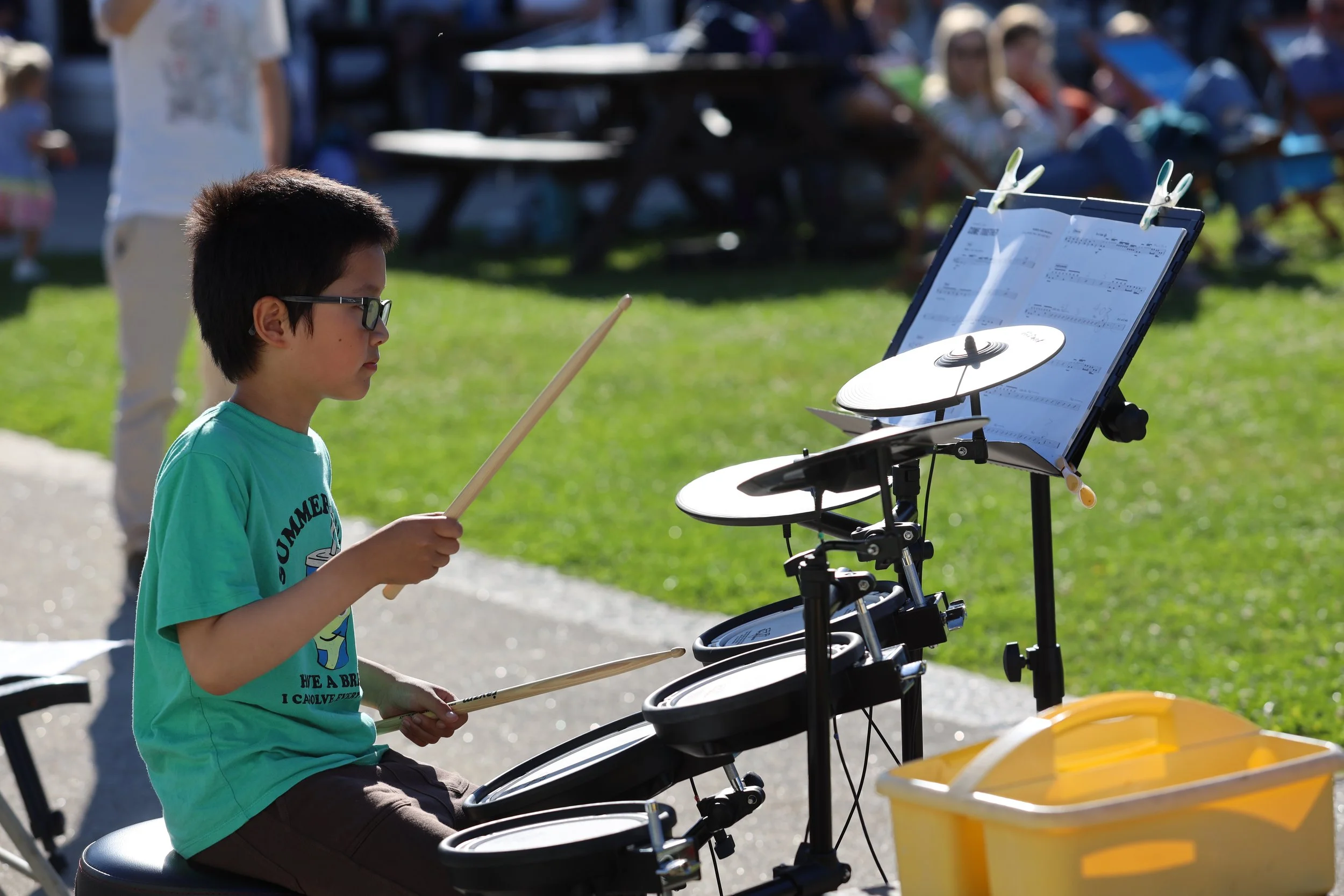Percussion
The world of bang, crash and ting! This family is the driving force of all music and. exists in some form or another in all types of music, keeping the song in time and making everyone dance!
The Percussion Team places equal emphasis on breadth of musicianship alongside enjoyment in learning. The team encompasses specialists in drum kit, Latin-American, timpani and orchestral percussion (both tuned and unpitched), and World Music such as Taiko, Samba, African and Steel Pans. We offer a broad curriculum from early music and baroque through pop, jazz, chamber, symphonic and theatre music to present day contemporary percussion repertoire.
Pick your Noise maker!
Drum Kit
Drum kits were often marching band-style military bass drums with many percussion items suspended on and around them. Drum kits became a central part of jazz, especially Dixieland. The modern drum kit was developed during the 1920s in New Orleans. The drum kit can now be heard in almost every kind of music keeping all of the musicians in time!
Did you know? Rick Allen, the drummer for Def Leppard, learned to play drums with one arm after losing an arm in an accident in 1984.
Percussion
Since the start of the 20th century that the variety of other percussion instruments has really taken off. Untuned instruments such as gongs from east Asia have been adopted and adapted for use in the modern orchestra. Today composers take a truly global approach to using percussion instruments. This process is further encouraged by the percussionists themselves, many of whom are enthusiastic adopters of new instruments and pride themselves on perfecting their skills with an enormous range of instruments.
Did you know? The human body is considered a percussion instrument. Body percussion involves using the hands to strike different parts of the body, clapping, and stomping to produce varying sounds.
Timpani
Timpani, or kettledrums, come in pairs and feature foot pedals for changing pitch. Drumsticks and mallets come in a wide selection of sizes and materials. They are used in many types of ensembles, including concert bands, marching bands, orchestras, and even in some rock bands.
Did you know? A single timpano drum can weigh as much as 140 pounds. That’s a similar weight to an adult person!
Hand Percussion
When we talk about hand percussion we mean percussion instruments which are played by hand as opposed to using a stick or mallet. These are some of the most ancient instruments known to man and the include instruments such as a Conga from Cuba and the Djembe from Africa.
Did you know? Talking drums from Africa were once used to communicate over large distances.
Tuned Percussion
These instruments are often made using bars, normally metal or wood, which are suspended and hit by beaters. They may also have resonators and are often laid out like a piano keyboard. This includes instruments such as the xylophone, marimba, glockenspiel and chime bars. But some of these instruments look massively different such as the steel drum or tuned bells.
Did you know? Steel drums were originally made by cutting a steel pan down and beating the bottom into tuned pads which can be played.
Piano
Undoubtedly the most diverse instrument in terms of styles and sound, more recently the piano has become part of a family of it’s own but this is actually included within the percussion family. This includes keyboards, piano, harpsichord, rhodes, synthesizer and more.
Did you know? The word piano is the shortened version of the word pianoforte, which means soft (piano) and loud (forte).
Samba
A samba band is a large group of instruments normally consists of Tamborims , Snare drums (Caixa), Agogo bells, Surdos, Ganzás / Chocalho (shakers), Cuíca, Timbal, Pandeiro, and the Repinique. Samba music originally comes from Brazil and is a key part of Carnival.
Did you know? Samba music has no set structure and follows a series of signals from the lead repinique player. The signals are often played on a whistle called the apito.
Taiko
“Taiko” is a word used to refer to any drum in Japan. But to the English-speaking world, “taiko” is a term that has come to mean “a traditional style of Japanese drumming”. This is a very theatrical style of drumming which could even be considered dance as the musicians move around each other while playing.
Did you know? Some Taiko groups even incorporate martial arts into their routines.









